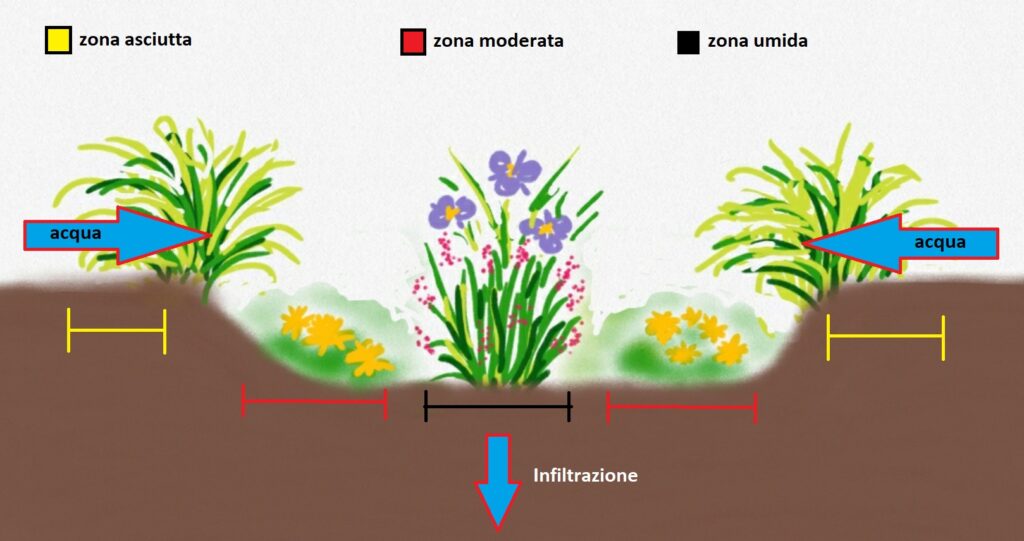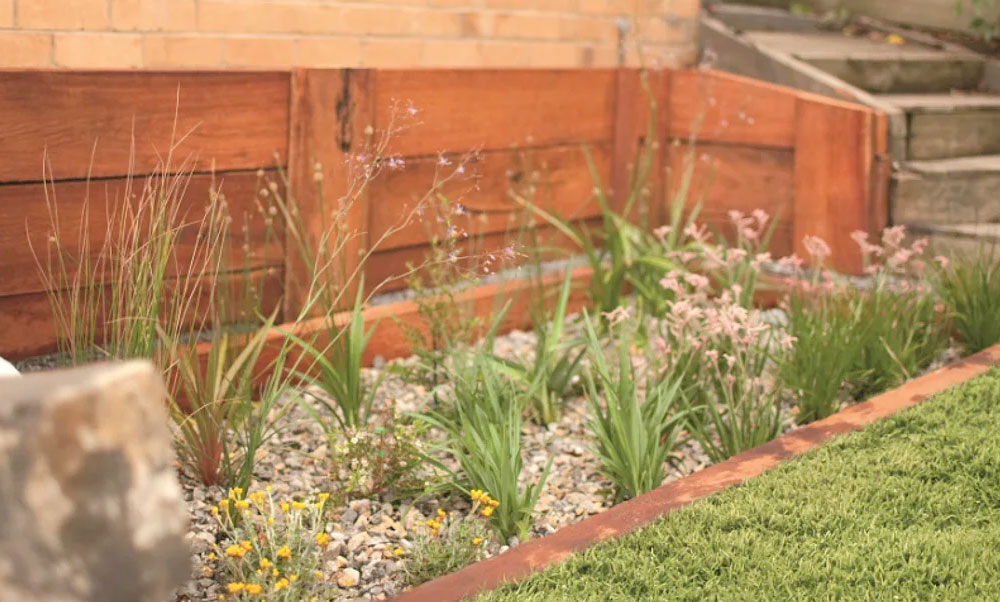A rain garden is a clever way to manage stormwater while creating a beautiful, functional spot for native plants and wildlife. Unlike ordinary garden beds, a rain garden is designed to capture runoff from your roof, driveway or paths, filter it naturally and slow it down so it doesn’t end up washing away precious topsoil or polluting local waterways. They work especially well in urban and suburban gardens where heavy rain often runs straight into drains, carrying fertilisers and litter with it.
A rain garden is usually a shallow, bowl-shaped area dug into the ground or built up with edges. It’s filled with free-draining soil, sand and sometimes gravel layers to help water soak in and filter through plant roots. During rain, runoff collects in the garden, soaks slowly into the ground and helps recharge the local water table instead of disappearing down the gutter.

Choose the right spot
Why it works: The best spot for a rain garden is where you naturally get water flowing — for example, at the end of a downpipe, near a driveway or beside a paved area. It needs to be slightly lower than surrounding ground so water collects there rather than flowing away. Make sure it’s at least a few metres from buildings so you don’t accidentally cause damp problems.
Use local native plants
Why it works: Local native plants are ideal because they’re adapted to both wet and dry spells. They help filter out pollutants, stabilise the soil and provide habitat for birds and insects. Good rain garden plants include tussock grasses like Poa labillardierei, sedges like Carex appressa or Ficinia nodosa, and flowering species like Goodenia ovata or native mint (Mentha australis). Mixing plants with deep and shallow roots helps slow water movement and keeps the soil healthy.
Build healthy layers
Why it works: The key to a rain garden is well-draining soil that doesn’t stay waterlogged for too long. Typically, a mix of sandy loam and organic compost works well, with a layer of gravel or coarse sand underneath for extra drainage. A rock or mulch layer on top can help reduce erosion when heavy rain hits.
Keep it low maintenance
Why it works: Once your rain garden is planted and mulched, it should need very little care. Water it while the plants establish, then let rainfall do most of the work. Occasionally check that inlets and outlets aren’t blocked with leaves or debris. Choose hardy natives so you don’t need to use fertilisers, which can wash into local creeks.
A rain garden is a simple way to turn stormwater into an asset instead of a problem. It keeps precious rain on your block, creates habitat and helps protect local waterways at the same time. Even a small rain garden can make a big difference — and it’s one of the easiest ways to make your garden part of the bigger natural landscape.
